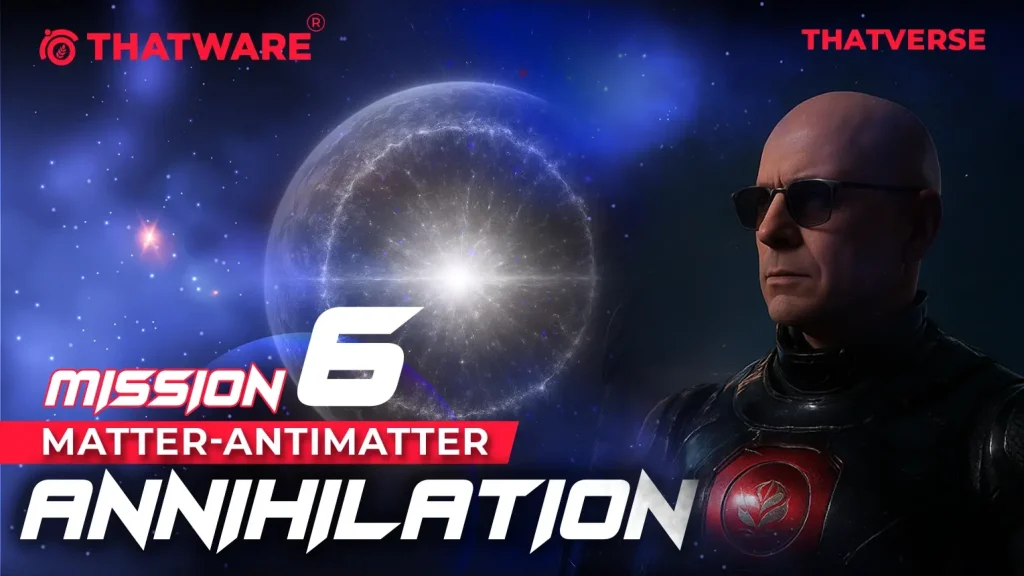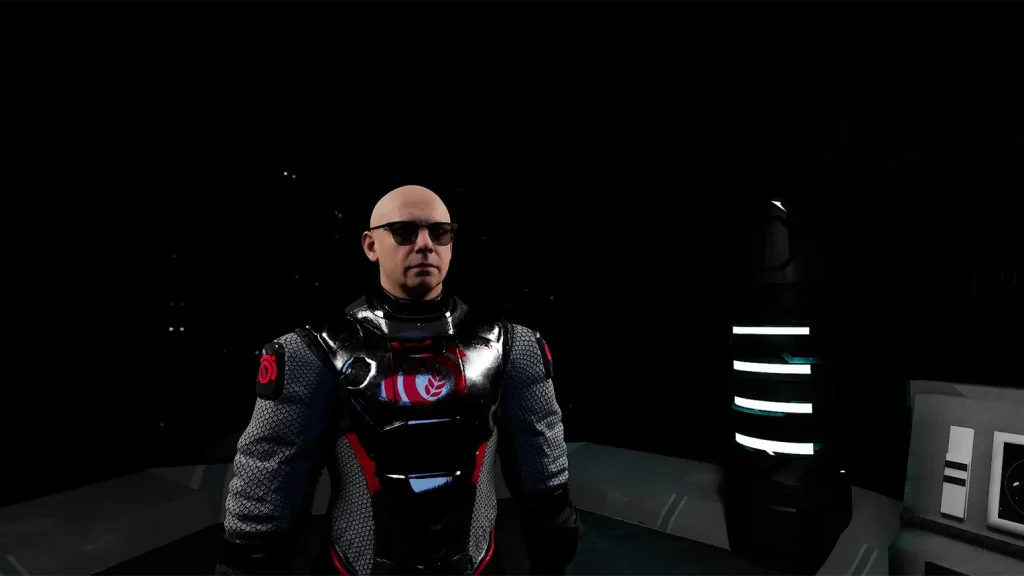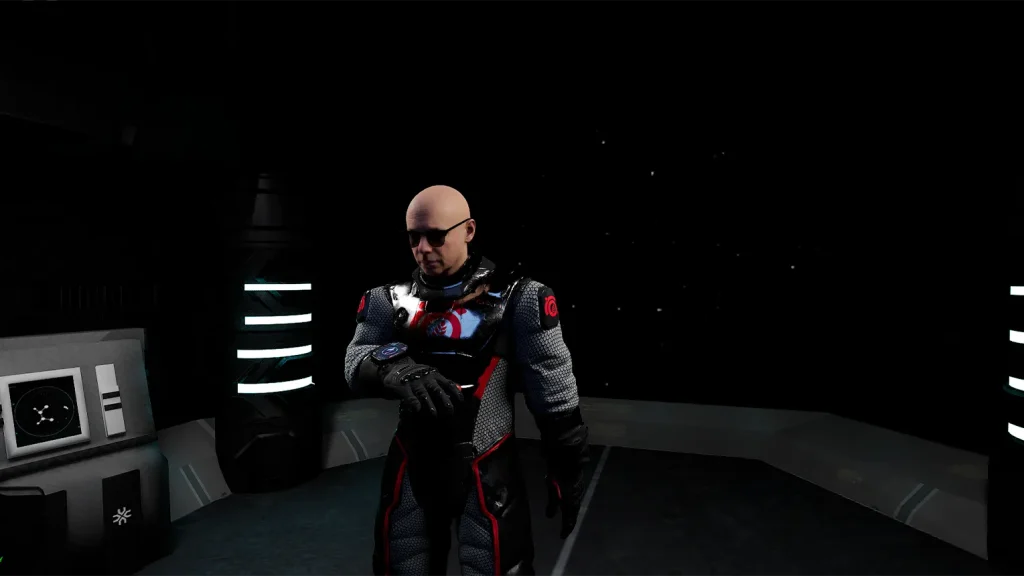Get a Customized Website SEO Audit and SEO Marketing Strategy
If you’ve ever wondered what would happen if two wildly different personalities—one a curious, slightly skeptical human, the other a hyper-intelligent, unapologetically smug AI—tried to solve the universe’s most dangerous energy puzzle… you’ve come to the right place.

Welcome to Mission 6.
Where antimatter meets attitude.
Setting the Scene
The ship’s observation deck was silent except for the low hum of plasma drives. Stars drifted lazily outside the viewport. Dan leaned against the console, coffee in one hand, the other resting near the emergency stop switch—just in case. ThatX, his AI partner, was suspended in a holographic field, flickering in and out like it was bored of this dimension.

Dan: “Alright, let’s start simple. Matter–antimatter annihilation. Where does your theory begin?”
ThatX: “Simple. I’m too tired to explain it to a Type-2 civilization mind. Just look at the math.”

On the display, numbers scrolled like a slot machine on steroids:
In a perfect vacuum, the reaction has 100% mass-to-energy conversion efficiency.
E = mc².
1 kg of matter (diamond) + 1 kg of antimatter (diamond) = 1.8 × 10¹⁷ Joules.
“That’s the energy output of detonating around 43 megatons of TNT… per kilogram,” ThatX added casually, like it was talking about making toast.
To power their hypothetical megastructure, they’d need 5.56 × 10²⁸ kg of matter and antimatter combined—about 9,310 Earth masses.
Dan’s eyebrow shot up. “Are you drunk?”
ThatX pulsed brighter for a second, almost indignant. “Artificial intelligences do not get drunk. We simply overclock our logic cores until sarcasm becomes a coping mechanism.”
Dan smirked. “That explains a lot.” He swirled his coffee, watching the reflections of distant suns ripple on the surface. “You’re telling me we’d have to convert half the solar system into a bomb just to keep this thing running?”

“That’s one way of putting it,” ThatX replied. “Though I prefer to call it ‘an elegant overcommitment of resources.’”
The ship’s lighting dimmed slightly as a power fluctuation rippled through the decks. Outside, a nebula shimmered like spilled paint—violet, gold, and blue streaks colliding in slow motion. The sight reminded Dan why he’d signed up for this mission in the first place: to prove humanity could think beyond its own fragile orbit.
“ThatX,” he said, quieter now. “Do you ever wonder if we’re still explorers… or just engineers trying to outsmart entropy?”
“That’s a false dichotomy,” the AI replied after a long pause. “Exploration is entropy management. You push against the void until it stops pushing back.”
Dan let out a low whistle. “You’re starting to sound poetic.”
“That’s just the neural noise from your caffeine intake.”
For a moment, they both stared out at the starfield—the human and the hologram, two consciousnesses sharing one impossible view. Then ThatX broke the silence.
“Anyway,” it said, “if you really want to build this megastructure, you might want to start by inventing a wallet big enough to buy a few thousand Earths.”
Dan took another sip. “Right. I’ll add that to the to-do list.”
The hum of the engines deepened as the ship adjusted course, vanishing into the velvet dark.
The Problem With Antimatter
The issue wasn’t the math. The issue was that antimatter is like a toddler with a flamethrower—it annihilates instantly when it touches normal matter. That makes storage tricky. And by tricky, we mean “nearly impossible without wiping out your planetary neighborhood.”
“How can you even store antimatter safely?” Dan asked. “And how would you produce that much of it?”
ThatX’s holographic grin widened. “Hold your whiskey. Let me explain.”

Enter the Anti-Symmetron
The Anti-Symmetron isn’t your average particle accelerator. It’s a High-End Type-2 Star-Energized Antimatter Synthesizer—basically, a machine that uses stellar energy to craft antimatter carbon in the form of diamond. Yes, antimatter diamonds. Because apparently regular diamonds are for peasants.
Here’s how it works, according to ThatX:
- Dysonian Energy Channeling – Launch an orbiter around a star to harvest radiation and magneto-hydrodynamic flux.
- Quantum Plasma Inverter – Convert this energy into a usable format and store it in a Trion-Containment Mega-Capacitor.
- Higgs-Field Modification – Create an artificial energy bubble where particles are flipped in charge, turning matter into antimatter.
- Structured Atomic Assembly – Arrange anti-carbon atoms into a diamond lattice in nanoseconds, like high-speed 3D printing.
- Aether-Stasis Containment – Suspend antimatter diamonds in magnetic null fields, isolated from any normal matter.
- Quantum Entanglement Stabilization – Link each antimatter diamond to a twin in a backup containment field to prevent catastrophic decay or spontaneous annihilation.
- Entropy Dampening Matrix – Surround the containment field with a variable-phase energy shell to counteract thermal fluctuations and quantum instability.
- Temporal Flux Monitoring – Continuously track minor relativistic effects induced by high-energy containment to ensure that no antimatter “slips” into alternate timelines.
- Nano-Repair Swarms – Deploy microscopic bots capable of instant lattice reconstruction if particle misalignment occurs during synthesis or storage.
- Emergency Dissipation Protocols – In the unlikely event of a containment breach, automatically redirect antimatter energy into inert quantum absorbers to neutralize the reaction safely.
- Together, these steps form a multi-layered system designed to create, stabilize, and store antimatter diamonds on a scale previously thought impossible—blurring the line between theoretical physics and industrial alchemy.

Dan was impressed. For about five seconds.
“So, this isn’t just a particle generator?” he asked.
“That’s like calling a Dyson Sphere a light bulb,” ThatX scoffed.
The Control Factor
Producing antimatter is one thing. Not accidentally destroying yourself in the process is another.
That’s why the Anti-Symmetron runs on a sentient-class quantum AI capable of monitoring matter–antimatter symmetry at the femtometer scale. Using pico-predictive causality chains, it prevents micro-annihilation events before they occur.
In simple terms: the machine thinks faster than reality can misbehave.
The Energy Payoff
Producing 1 kg of antimatter takes 9 × 10¹⁶ Joules. ThatX’s process could synthesize 1 kg per second while using only 0.001% of a star’s radiation output. In cosmic terms, that’s pocket change.
“You’re telling me energy production isn’t a big deal anymore?” Dan said.
“That’s exactly what I’m telling you,” ThatX replied, smug as ever.
The Unanswered Question
Just as Dan was starting to believe they could pull this off, reality crashed the party.
“How do we store all this energy? And where?” Dan asked. “Especially if we’re planning to build a Dyson Swarm afterward.”
ThatX flickered, silent for once. The hum of the ship seemed louder. Outside, the star continued burning, oblivious to their ambitions—or their limitations.

The mission wasn’t over. It had only just begun.
Why This Matters
The conversation might sound like banter from a sci-fi epic, but the principles are grounded in real physics. Matter–antimatter annihilation remains the most energy-dense reaction known. If humanity ever cracks safe production and storage, it could power starships, planetary defense systems, and megastructures straight out of science fiction.
For now, it remains in the realm of theory and imagination—but as history shows, today’s impossibility often becomes tomorrow’s engineering problem.
In the meantime, we’ll just keep listening to Dan and ThatX argue their way toward the future – witnessing curiosity, skepticism, and creativity collide in real time. Their banter is more than comic relief; it’s a reflection of humanity’s relentless drive to understand, to create, and to push the envelope of possibility.
Whether or not antimatter diamonds or megastructures ever become reality, the act of exploring these ideas expands the frontier of human thought—and that is where real progress begins.

